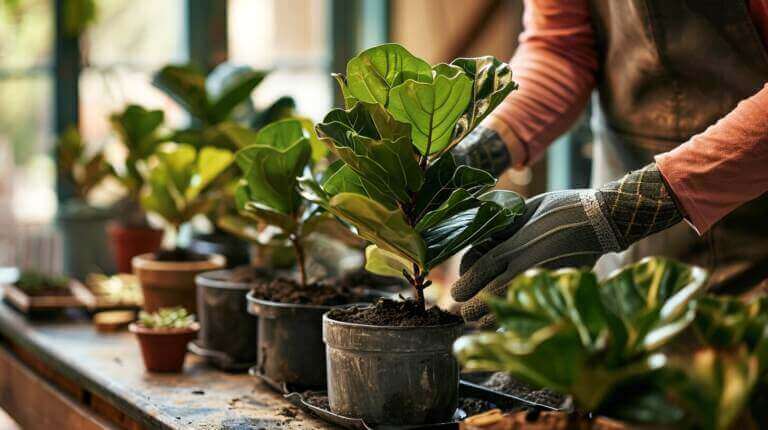In today’s fast-paced world, finding ways to bring a little bit of nature into our lives can be a welcome respite. If you’re looking to add some greenery to your space, the Chinese Evergreen houseplant is an excellent choice.
Not only does it add beauty and freshness to any room, but it also offers numerous health benefits. In this complete care guide, we will explore everything you need to know to ensure your Chinese Evergreen thrives and flourishes, bringing joy and serenity to your surroundings.
Key Takeaways
- Select a well-lit room for indoor placement and protect the plant from direct sunlight when placed outdoors.
- Allow the top inch of soil to dry out before watering again and create a watering routine to prevent overwatering.
- Chinese Evergreens thrive in temperatures between 65-75°F (18-24°C) and should be protected from extreme temperatures.
- Maintain moderate to high humidity levels, mist the leaves, and use a tray of water or a humidifier to provide ideal humidity.
Choosing the Right Location for Your Chinese Evergreen Plant(Aglaonema)
One of the most important factors in successfully caring for a Chinese Evergreen plant is selecting the appropriate location for it to thrive. Whether you choose to keep your plant indoors or outdoors will depend on the specific needs of your Chinese Evergreen.
Indoors, these plants prefer bright, indirect light, making them a great addition to any well-lit room. However, they can also tolerate lower light conditions, making them versatile for different areas of your home or office. If you decide to place your Chinese Evergreen outdoors, it is crucial to ensure it is protected from direct sunlight, as this can scorch the leaves.
By understanding the lighting requirements of your Chinese Evergreen and choosing the right placement, you will set the foundation for a healthy and thriving plant.
Moving forward, let’s explore how to establish a proper watering schedule for your Chinese Evergreen plant.
Establishing a Proper Watering Schedule for Your Chinese Evergreen Plant
When establishing a proper watering schedule for your Chinese Evergreen plant, it is essential to consider its specific moisture requirements and the environmental conditions in which it is placed. Creating a watering routine will help ensure that your plant receives the right amount of water without risking overwatering.
To prevent overwatering, it is important to allow the top inch of soil to dry out before watering again. One way to determine if your plant needs water is by checking the moisture level using your finger or a moisture meter. Remember that Chinese Evergreen plants prefer slightly moist soil, so avoid letting the soil dry out completely.
By maintaining a consistent watering schedule and monitoring the moisture levels, you can help your Chinese Evergreen thrive.
Now, let’s explore how to maintain the ideal temperature for your Chinese Evergreen plant.
Maintaining the Ideal Temperature for Your Chinese Evergreen Plant
To ensure optimal growth and health, it is crucial to maintain a consistent and suitable temperature range for your Chinese Evergreen indoor plant. Chinese Evergreens thrive in temperatures between 65-75°F (18-24°C), making them perfect for indoor environments.
It is important to protect your plant from extreme temperatures, as they can be detrimental to its overall well-being. Too much heat can cause leaf burn and dehydration, while extreme cold can lead to frost damage and stunted growth.
To maintain the ideal temperature, place your Chinese Evergreen in a location away from drafts or direct sunlight. If the temperature drops below 60°F (15°C), consider providing supplemental heat with a space heater or by placing the plant near a heat source.
Providing the Right Humidity Levels for Your Chinese Evergreen Plant
In order to ensure optimal growth and health for your Chinese Evergreen plant, it is essential to maintain the right humidity levels. Chinese Evergreens thrive in moderate to high humidity environments, mimicking their natural habitat in tropical rainforests. The humidity requirements for these plants range from 50% to 60%.
To provide the ideal humidity for your Chinese Evergreen, you can use various methods such as misting the leaves with water, placing a tray of water near the plant, or using a humidifier. Misting the leaves not only increases humidity but also helps to keep the plant’s foliage clean and dust-free. The benefits of misting include preventing dryness and dehydration, promoting healthy growth, and reducing the risk of pests.
By ensuring the right humidity levels, you can create a thriving environment for your Chinese Evergreen plant.
Now that you understand the importance of maintaining proper humidity levels, let’s move on to troubleshooting common issues with your Chinese Evergreen plant.
Troubleshooting Common Issues With Your Chinese Evergreen Plant
- If you notice any issues with your Chinese Evergreen plant, it is important to address them promptly and effectively.
- Common issues that may arise include pest infestations and the need for pruning.
- When it comes to pest control, it is crucial to identify the specific pest affecting your plant and choose the appropriate treatment method.
- For example, if you notice spider mites, you can try using a mixture of water and dish soap to eliminate them.
- Additionally, pruning techniques can help maintain the health and appearance of your Chinese Evergreen.
- Regularly inspect your plant for any dead or damaged leaves and use clean, sharp pruning shears to remove them.
Frequently Asked Questions
How Often Should I Fertilize My Chinese Evergreen Plant?
To ensure the healthy growth of your Chinese Evergreen plant, it is important to fertilize it at regular intervals. Fertilizer frequency for Chinese Evergreen plants can vary depending on various factors such as the type of fertilizer used, the size of the plant, and the growth rate.
Generally, it is recommended to fertilize your Chinese Evergreen plant every 2 to 3 months during the growing season. This will provide the necessary nutrients for the plant’s development and promote vibrant foliage.
Can I Propagate My Chinese Evergreen Plant?
Propagation techniques for Chinese Evergreen plants involve taking stem cuttings and rooting them in water or a well-draining soil mix. To increase the chances of success, it is important to choose healthy and mature stems for cutting.
The best soil for propagation is a mix of peat moss, perlite, and vermiculite, which provides good drainage and aeration. Proper care, such as maintaining humidity and temperature levels, will help the cuttings develop roots and establish as new plants.
What Are Some Common Pests That Can Affect Chinese Evergreen Plants?
Common pests that can affect Chinese evergreen plants include mealybugs, spider mites, and scale insects. These pests can cause damage to the leaves and stems of the plant, leading to stunted growth and a decline in overall health.
To identify and treat these pests, it is important to regularly inspect the plant for signs of infestation, such as webbing or sticky residue. Treatment options include using insecticidal soap or neem oil, and practicing good plant hygiene to prevent future infestations.
Is it Safe to Have a Chinese Evergreen Plant in a Household with Pets and Children?
Chinese evergreen toxicity explained: It is important to know that Chinese evergreen plants can be mildly toxic to pets and children if ingested. While not generally life-threatening, it may cause mild gastrointestinal discomfort. It is advised to keep these plants out of reach or opt for pet-friendly alternatives to ensure the safety of your loved ones.
How Often Should I Repot My Chinese Evergreen Plant?
The frequency of repotting a Chinese Evergreen plant depends on several factors. These factors include signs of a root bound plant and the plant’s growth rate. Signs of a root bound plant may include roots circling the bottom of the pot or emerging through the drainage holes.
Generally, it is recommended to repot a Chinese Evergreen plant every 2-3 years. Ideally, this should be done in the spring when the plant is actively growing. Repotting provides several benefits for the plant. These benefits include fresh soil, increased space for root growth, and rejuvenation of the plant.
By repotting the plant, you give it access to fresh soil, which can provide essential nutrients for growth. Additionally, the increased space for root growth allows the plant to establish a stronger root system. This can lead to healthier overall growth and a more robust plant.
Furthermore, repotting can rejuvenate the plant. Over time, the soil in the pot can become compacted and depleted of nutrients. By repotting, you provide the plant with a fresh start and the opportunity to thrive.
Can I Place My Chinese Evergreen Plant Outdoors During the Summer Months?
During the summer months, it is generally not recommended to place a Chinese Evergreen plant outdoors, as it is native to tropical regions and thrives in consistent indoor temperatures. Outdoor temperature fluctuations can be detrimental to the plant’s health and growth.
It is best to keep the plant indoors where the temperature can be controlled and maintained. Additionally, ensure a regular watering schedule, allowing the soil to dry out slightly between waterings to prevent overwatering.







